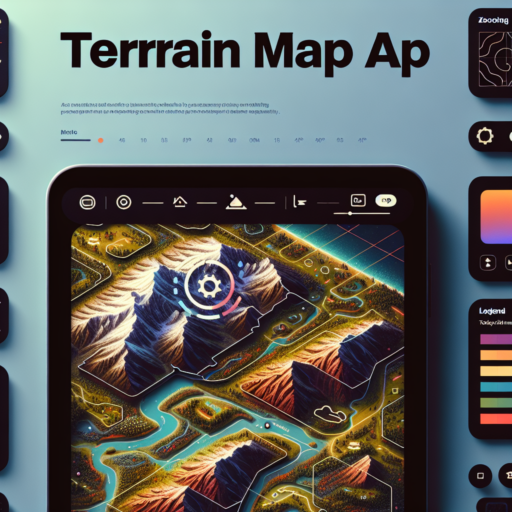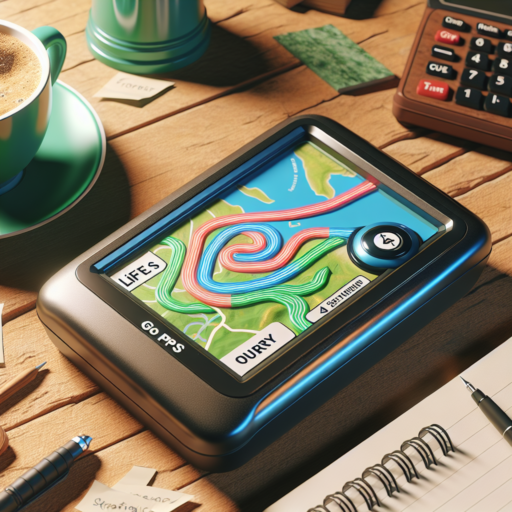Introducing the Best Terrain Map Apps of 2023
Navigating through the vast and varying landscapes has become more seamless than ever before with the advent of advanced terrain map apps. The year 2023 has witnessed significant milestones in this niche, bringing forth applications that present meticulous details and extensive features designed for adventurers, hikers, and professionals alike. These apps do not only depict elevation profiles and topographical elements with precision but also integrate weather data, trail information, and navigation tips tailor-made for the outdoor enthusiast.
Among the standout features introduced in the best terrain map apps of 2023 is the real-time data synchronization, allowing users to receive immediate updates about trail conditions, closures, and weather changes. Enhanced GPS functionality ensures that you always stay on track, even in the most remote locations. Moreover, the customization options offered by these apps let users tailor maps according to their specific needs, emphasizing critical paths or points of interest.
It’s not just the functionality that sets these apps apart; the user experience has also seen significant improvements. Simplified user interfaces, quick loading times, and interactive elements make navigation intuitive. Whether you’re planning a short hike, a mountain climb, or a cross-country expedition, the 2023 terrain map apps are designed to cater to a broad spectrum of needs, ensuring safety, reliability, and a wealth of information at your fingertips.
Key Features to Look for in a Terrain Map App
When selecting a terrain map app for outdoor adventures, certain features stand out as essential for navigation, planning, and safety. These features enrich the user experience, providing accurate, detailed information about the physical landscape.
High-Resolution 3D Mapping
The core of any superior terrain map app lies in its ability to display high-resolution, 3D maps. This feature allows users to visualize the landscape in detail, making it easier to understand the topography and plan routes more effectively. Whether you’re hiking, biking, or planning a photographic expedition, seeing the terrain in three dimensions helps in anticipating the challenges and opportunities of the environment.
Offline Access and Downloadable Maps
Another critical feature is the capability for offline access and downloadable maps. In many outdoor scenarios, especially in remote areas, internet access is unreliable or nonexistent. An app that provides the option to download maps beforehand ensures that you remain on track, even when off the grid. This feature is indispensable for hikers, mountaineers, and explorers venturing into areas where connectivity is limited.
Real-Time Weather Updates and Alerts
Lastly, real-time weather updates and alerts are crucial for any outdoor activity. Sudden weather changes can pose significant risks in the wilderness. A terrain map app that offers updated weather information helps users make informed decisions about their routes and safety precautions. Being prepared for the weather can mean the difference between a successful outing and a potentially dangerous situation.
How Terrain Map Apps can Enhance Your Outdoor Adventures
Exploring the great outdoors has always been a beloved adventure for many, but with the advent of terrain map apps, these experiences have been significantly enhanced. Such technology brings a wealth of information to your fingertips, ensuring that every hike, climb, or trail run is both safer and more enjoyable. These apps, with their detailed topographic maps and interactive features, have revolutionized the way we interact with the natural environment.
One of the key benefits of using a terrain map app is its ability to improve navigation in even the most remote areas. These digital maps provide real-time location tracking that can prevent getting lost, making them indispensable tools for adventurers. Furthermore, they often include features like waypoints and markers that users can customize, thereby planning their routes with precision. This level of detail not only enhances safety but also increases the efficiency of your adventure, allowing for more time to enjoy the stunning views and thrilling challenges the wilderness offers.
Terrain map apps also cater to a wide variety of outdoor activities, making them versatile companions for any adventure seeker. Whether you’re into hiking, mountain biking, skiing, or trail running, these apps can provide specialized maps that highlight relevant information such as trail difficulty, points of interest, and even current weather conditions. This tailored approach ensures that adventurers of all interests and skill levels have the necessary information to fully engage with their chosen activity, making every outdoor adventure a memorable one.
Top 5 Terrain Map Apps for Hikers and Outdoor Enthusiasts
Finding the best terrain map apps is crucial for hikers and outdoor enthusiasts keen to explore the great outdoors with confidence. These apps not only provide detailed topographic maps but also offer valuable insights like trail lengths, elevation changes, and points of interest. With technology becoming an indispensable part of outdoor adventures, we delve into the top 5 terrain map apps that stand out for their accuracy, user-friendliness, and utility.
AllTrails is perhaps the most recognized app among adventurers, offering over 100,000 detailed trail maps. It allows users to filter searches by activity, length, and difficulty. Moreover, it features user-generated content like photos and reviews, giving insights into real experiences on the trails.
GAIA GPS is another favorite, especially among serious hikers and backpackers who require off-the-grid navigation. It provides detailed topographic maps and integrates seamlessly with GPS to offer offline mapping. Its subscription service further grants access to National Geographic Trails Illustrated maps and other premium features, enhancing the outdoor experience.
For those who find joy in discovering new trails and sharing their adventures, Komoot stands out. It emphasizes route planning and community engagement, allowing users to plan their hikes, bike rides, and more. Komoot offers detailed voice navigation and offline maps, which are particularly beneficial when exploring unknown terrains.
Using Terrain Map Apps for Professional Landscaping and Architecture
In the competitive fields of landscaping and architecture, leveraging the latest technological tools can give professionals a significant edge. One such innovation is the use of terrain map apps, which have revolutionized how projects are conceived, planned, and executed. These apps provide a comprehensive overview of geographical and topographical features, enabling architects and landscapers to design with precision and creativity.
Streamlining Project Planning with Detailed Topographical Data
Terrain map apps empower professionals by providing detailed, accurate topographical and geographical data at their fingertips. This data is crucial for making informed decisions about land use, drainage, vegetation, and other key elements of landscaping and architecture projects. By having access to this level of detail early in the planning process, professionals can avoid costly mistakes and design spaces that are both beautiful and functional.
Enhancing Collaboration and Communication
Another significant benefit of using terrain map apps in professional landscaping and architecture is the improvement in collaboration and communication. These apps often allow for the sharing of maps and designs in real-time, fostering a collaborative environment where ideas can flow freely between team members, clients, and stakeholders. This ensures that everyone involved has a clear understanding of the project vision and can contribute effectively to its realization.
In conclusion, the integration of terrain map apps into the workflow of landscaping and architectural professionals marks a shift towards more informed, efficient, and collaborative project planning and execution. With the ability to visualize and analyze complex topographical data easily, these professionals can push the boundaries of design and create spaces that perfectly blend functionality with aesthetics.
Comparing Free vs. Paid Terrain Map Apps: What’s Best for You?
Choosing between free and paid terrain map apps can significantly impact your outdoor adventures, travels, or planning sessions. While free apps provide a budget-friendly option, paid apps often offer advanced features and enhanced precision that can be vital for specific needs. Understanding the key differences and what they mean for you is essential in making an informed decision.
Free terrain map apps typically attract a vast user base due to their no-cost entry. They are particularly appealing for casual users, hikers, and those who require basic mapping functionalities without the frills of advanced analytics or detailed terrain compositions. However, the main caveat with free versions is the compromise on detail, accuracy, and sometimes an overload of ads, which can detract from the user experience.
On the other hand, paid terrain map apps are designed with the professional or serious adventurer in mind. Offering detailed, high-resolution maps, these apps often include features such as offline access, comprehensive terrain data, and advanced navigation aids. The initial investment might deter some, but for enthusiasts who demand reliability and depth in their geographical information, the cost is often justified.
No se han encontrado productos.
Integrating Terrain Map Apps with Your Fitness Tracker for Ultimate Hiking Experience
Enhance Your Hiking with Advanced Mapping
When it comes to scaling rugged landscapes or exploring off-the-beaten paths, integrating terrain map apps with your fitness tracker can transform your hiking adventures. This hybrid approach not only tracks your physical exertion but also layers it with detailed topographical data. Equipping yourself with real-time insights into elevation changes, possible obstacles, and trail difficulty can significantly optimize your route planning and safety measures.
Real-Time Data at Your Fingertips
The fusion of terrain maps and fitness trackers provides hikers with unparalleled access to real-time data. This means being able to adjust your expectations and strategies on the fly, whether it’s to avoid sudden weather changes or to tackle unexpected terrains. The integration fosters a deeper connection with the environment, ensuring that hikers are well-prepared and can make informed decisions, whether they’re aiming for peak performance or a leisurely trail walk.
Customizable Experience for Every Hiker
No two hikers’ preferences or needs are exactly alike, and the combination of terrain map apps and fitness trackers acknowledges this through customization. Users can tailor their experience based on fitness levels, hiking interests, and safety concerns. Whether you’re interested in tracking your speed, the distance covered, or elevation gained, this technology adapts to meet your goals. It’s not just about recording your journey, but enhancing your interaction with nature, making every hike a unique experience.
User Guide: How to Interpret Data on Your Terrain Map App
Interpreting data on your terrain map app doesn’t have to be complex. Knowing what each symbol, color, and line means can turn a baffling chart into a navigator’s best friend. This guide is here to demystify the process, helping you understand the landscape at just a glance.
Understanding Elevation and Contour Lines
Elevation data is crucial for understanding the physical layout of an area. On most terrain map apps, elevation is represented by contour lines. A contour line is a curve that connects points of equal elevation above sea level. Consequently, closely spaced contour lines indicate a steep slope, whereas widely spaced lines suggest a gentle slope. This information can be invaluable for hikers preparing for the physical challenges of a trail, or for engineers planning construction in a new area.
Deciphering Color Codes
Color coding is another essential feature of terrain map apps, used to denote different types of land. Commonly, green indicates lower elevations with denser vegetation, while brown represents higher elevations like mountains and hills. Blue, on the other hand, is typically used to show water bodies such as lakes, rivers, and oceans. By understanding these color codes, users can quickly assess the nature of the terrain, whether it’s for planning a scenic hike or assessing potential flood zones.
Interpreting the data on your terrain map app allows you to unlock a wealth of information about the natural landscape. With a solid grasp of contour lines and color codes, you’ll find it easier to plan your adventures or projects with confidence. Remember, each map app may use slightly different symbols or colors, so always check the legend or user guide for specific details.
Tips and Tricks for Maximizing the Use of Your Favorite Terrain Map App
Navigating through the complex features of your chosen terrain map app can significantly enhance your outdoor adventures, whether you’re hiking, biking, or exploring remote areas. Mastering these applications allows you to uncover hidden features, optimize your routes, and ensure a safer journey. Below, we explore some invaluable tips and tricks designed to help you get the most out of your terrain map app.
Utilize Layer Options for Better Understanding of the Terrain
Exploring various layer options within your app can give you insights into topographic details, satellite imagery, and different terrain types. By toggling between these views, you can gain a comprehensive understanding of your surroundings, helping you to plan your route more effectively. Pay special attention to elevation profiles and potential obstacles that could impact your trek.
Download Maps for Offline Use
One key feature of terrain map apps is the ability to download maps for offline use. This is crucial for areas with limited or no mobile reception. Having access to your maps offline ensures that you can still navigate your environment, track your progress, and reroute if necessary, all without needing a live internet connection. Before setting out, make sure to download and update the map areas relevant to your adventure.
Take Advantage of Waypoints and Markers
Using waypoints and markers effectively can greatly enhance your navigational efficiency. Not only do they help you to mark points of interest, but they can also serve as navigation aids in difficult terrain. Customize your map by adding waypoints for camp sites, water sources, viewpoints, or potential hazards. This personalized layer of information makes it easier to plan stops, manage time, and ensure safety throughout your adventure.
The Future of Navigation: Innovations in Terrain Mapping Technology
In the realm of navigation and spatial awareness, terrain mapping technology is undergoing significant advancements, reshaping how we understand and interact with the world around us. These innovations are pivotal in enhancing the accuracy of maps, facilitating more efficient ways to plan routes, and substantially improving safety across numerous applications. From autonomous vehicles navigating intricate landscapes to hikers exploring untamed trails, the future looks promising as these technologies evolve.
Advancements in LiDAR Technology
One of the most significant breakthroughs in terrain mapping involves Light Detection and Ranging (LiDAR). This technology uses laser light to measure distances to the Earth’s surface, creating highly accurate 3D maps of the terrain. The enhancements in LiDAR technology have made it not only more accessible but also more cost-effective for a broader range of applications, including archaeology, forestry, and urban planning. As LiDAR becomes increasingly sophisticated, its potential to revolutionize how we understand geographical spaces is unparalleled.
Integration with Artificial Intelligence (AI)
Another leap forward is the integration of terrain mapping technologies with Artificial Intelligence (AI)). AI algorithms can process the vast amounts of data collected by mapping technology, identifying patterns and making predictions that were previously impossible. This symbiosis can optimize route planning for logistics companies, enhance the realism in virtual reality environments, and even predict geological hazards with greater accuracy. The fusion of AI with mapping technologies promises a new era of precision and efficiency in navigation.
These ongoing advancements in terrain mapping are not just about better understanding our world, but also about shaping a future where navigation is more intuitive, safer, and universally accessible. As we continue to push the boundaries of what’s possible, the innovations in terrain mapping technology will undeniably play a central role in defining the future of navigation.



